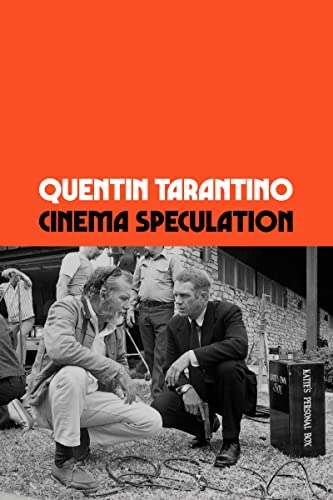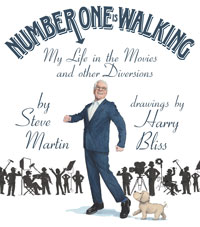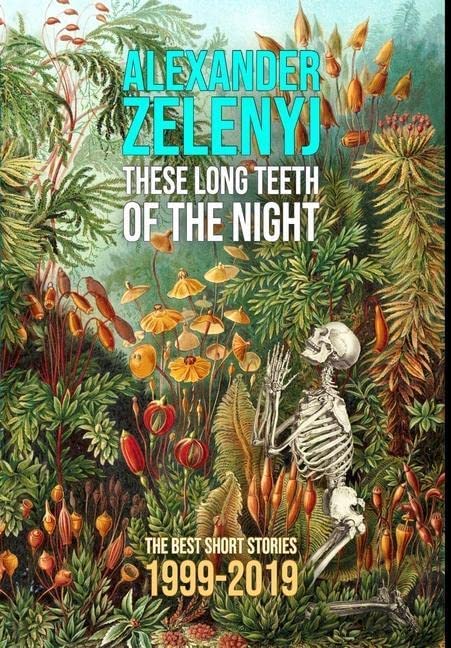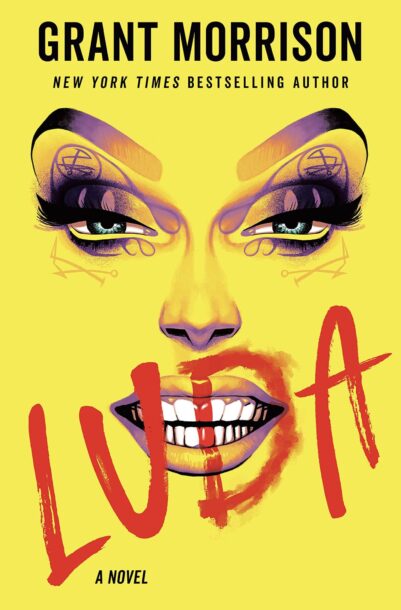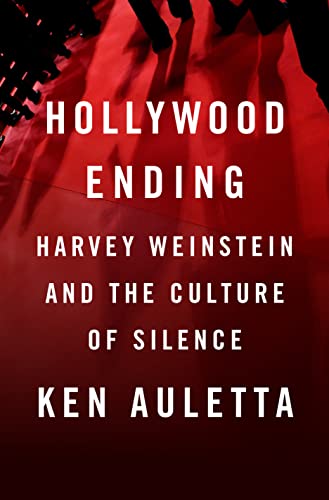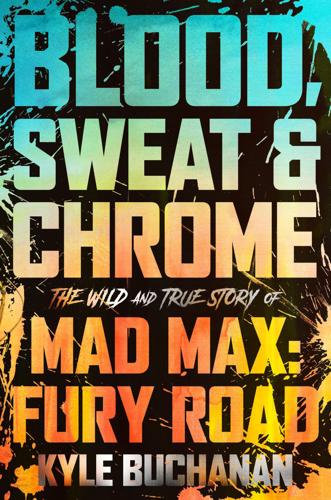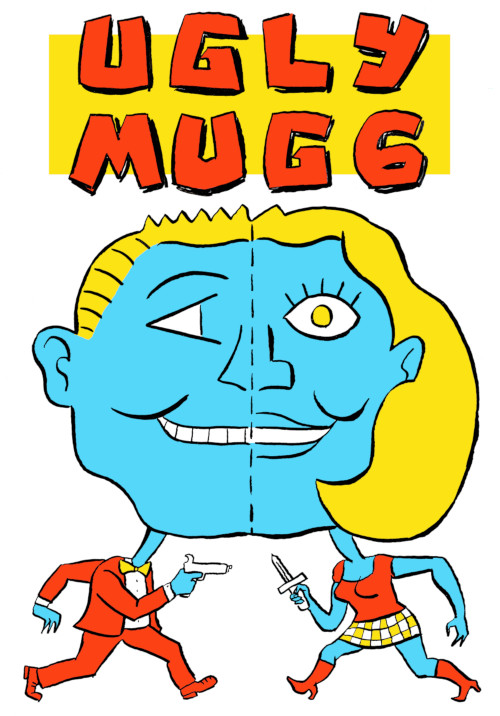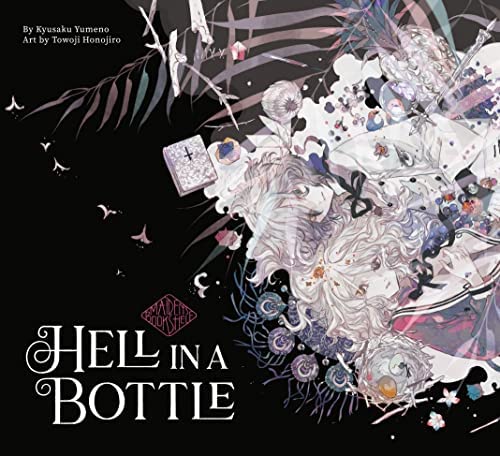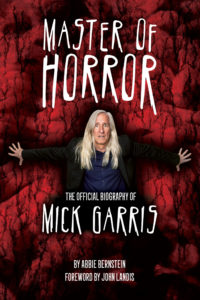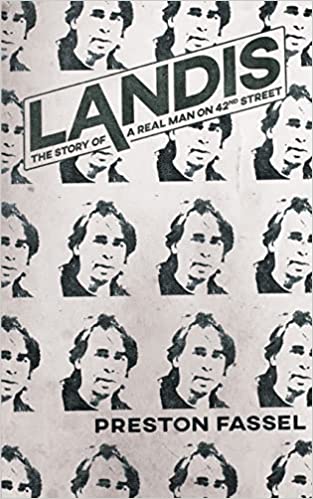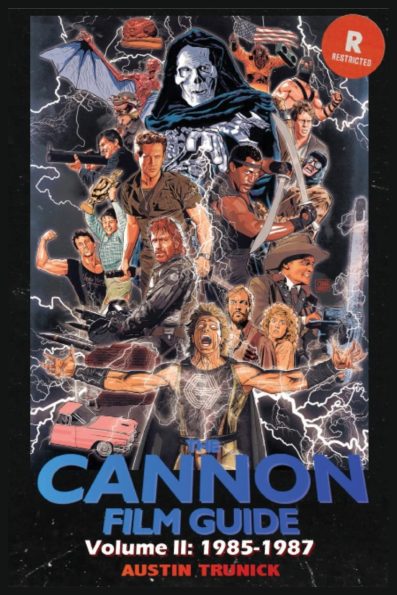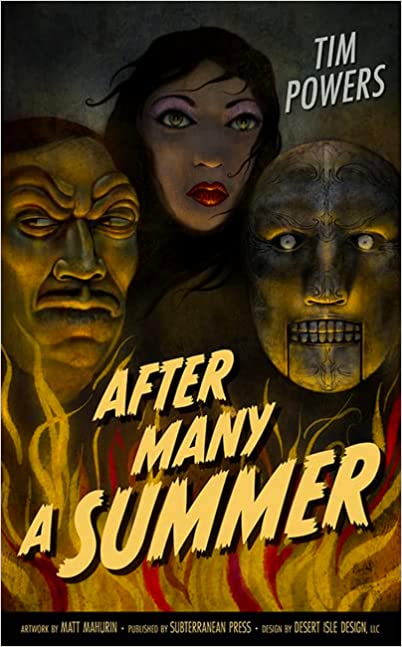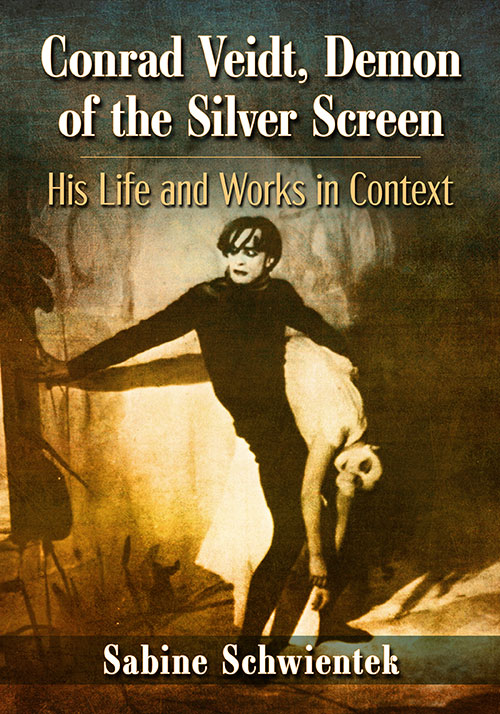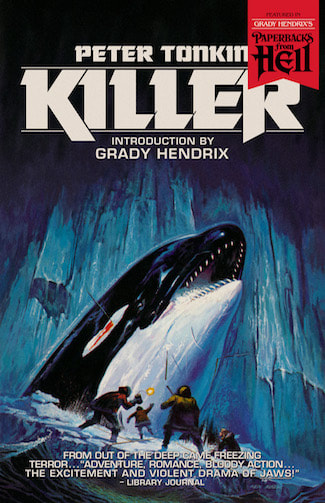- Book of the Year
- Biggest Disappointment
- Fiction
- Nonfiction
- Graphic Novels
- What I Missed Last Year
- Looking Forward
This latest Bedlam in Print arrives at the end of a fallow year for publishing. Despite the post-pandemic gains made by the industry, book sales declined in 2022, and given the quality of the year’s mainstream publications I can’t say I’m too surprised. As the following overview makes clear, the majority of my attention has been focused on smaller publishers like Fourth Horseman Press, Dunce Books and ATB Publishing—although I did read some worthwhile books from big name publishers, such as my choice for the…
BOOK OF THE YEAR
(Back to the top)
That would be QUENTIN TARANTINO’s Harper published CINEMA SPECULATION, a collection of enormously passionate and opinionated write-ups on 1960s and 70s movies. Woven in are snatches of history (Tarantino’s and that of the films’ makers) and, as the title portends, speculation. It’s all enormously fun to read, with an impressive breadth of knowledge and a highly quirky layout, Tarantino being quite partial to excessive italics and single sentence (sometimes single word) paragraphs.
BULLITT is touted as “one of the best directed movies ever made,” DELIVERANCE as having a good first half that then “dribbles to its conclusion,” and ROLLING THUNDER as “the best combination of character study and action film ever made.” Also included are a pair of essays detailing the roots of Tarantino’s obsession with all things filmic, a dissertation on the “New Hollywood” of the 1970s, and tributes to former LOS ANGELES TIMES film critic Kevin Thomas (“he seemed like one of the only practitioners who truly enjoyed their job, and consequently their life”) and longtime Tarantino idol Brian De Palma.
In summation, the writings contained in CINEMA SPECULATION are much like Quentin Tarantino’s movies: amusing, audience-friendly and filled with quotable lines.
BIGGEST DISAPPOINTMENT
(Back to the top)
I’m sure there’s a great book to be written about STEVE MARTIN’s adventures in the screen trade, a book to potentially rival his 2008 stand-up comedy memoir BORN STANDING UP, but NUMBER ONE IS WALKING: MY LIFE IN THE MOVIES AND OTHER DIVERSIONS (Celadon Books) isn’t it.
As promised, the book details the movie career of Mr. Steve Martin, albeit in the most shallow manner imaginable (as opposed to the honesty and brevity of BORN STANDING UP), being related largely in the form of cartoons drawn by NEW YORKER artist Harry Bliss. Martin was evidently afraid of offending his famous friends, and so only offers up sweet and affectionate recollections, such as PLANES, TRAINS AND AUTOMOBILES co-star John Candy’s ability to “make me laugh every time with an impression of an Italian gladiator movie, complete with bad dubbing,” Lily Tomlin telling him, following a screening of ALL OF ME (1984), “Don’t forget to leave in the boring parts,” and Helena Bonham Carter, after walking in a circle, admitting she was “walking off a fart.” We also get a quintessentially Steve Martin-esque primer on the key to show business success: “Be very creative and already be famous.”
Amusing, but I’d really like to hear about the making of more interesting (and less successful) Steve Martin Vehicles like PENNIES FROM HEAVEN (1981) and LEAP OF FAITH (1992). Alas, both go unmentioned. Worse, the moviemaking anecdotes only take up half the book, with the other half devoted to single panel drawings by Bliss that display a very middle-brow NEW YORKER-esque sense of humor.
FICTION
(Back to the top)
THESE LONG TEETH OF THE NIGHT is a collection of short stories spanning twenty years (1999-2019) of the career of Ontario’s ALEXANDER ZELENYJ, a modern master of all things weird, macabre and wonderful.
The opener is “Maria, Here Come the Death Angels!,” a Vietnam War set tale that offers a dark (very dark) variant on the war movie cliché about how when a soldier shows his buddies a picture of his significant other he’s sure to die soon. “We Are All Lightless Inside” offers a full-blown science fiction parable set in a future world where diseases take the form of monsters to be vanquished (the inspiration was the death of the author’s mother from cancer, so it’s a personal tale). There’s also “Love in Uncertain Times,” which contains a rare note of optimism in its account of the finding of prehistoric giants whose discovery makes the world, and the life of an inquisitive young boy, much better.
If the above aren’t sufficient indicators of the author’s considerable range, I submit “The Priests,” a mindbender about a being composed of three bodies linked together at the shoulder, and these “Priests’” misadventures in a freak show. The introductory note claims this personage began as “a minor character in a novel I took many years to complete,” a novel I’d very much like to read.
THE TWLIGHT WORLD (Penguin Press) was the first novel by filmmaker WERNER HERZOG, whose interest in extreme personalities has resulted in masterworks like EVEN DWARFS STARTED SMALL, AGUIRRE THE WRATH OF GOD and STROZEK—grandiose, visually stunning films about freaks, madmen and eccentrics of all stripes. In THE TWILIGHT WORLD Herzog relates the story of Hiroo Onoda (1922-2014), a Japanese intelligence officer who following the end of WWII spent 28 years ensconced in the Philippine jungle, believing the conflict was still raging.
According to a prefatory note, “Most details are factually correct; some are not. What was important to the author was something other than accuracy, some essence he thought he glimpsed when he encountered the protagonist of this story.” Hence the majority of this book, which provides a meaty and descriptive history beginning in December 1944, when the young Onoda was ordered by his superiors to hold off enemy attacks on Lubang Island in the Philippines. This he committed to, even after Onoda was forced into hiding in the wilderness, together with three fellows. Inevitably Onoda’s companions died off, leaving him to fend for himself in an increasingly hallucinatory reality that’s not too divergent from the celebrated imagery of Herzog’s films.
So how does the novel stack up? Quite well, with a sense of ecstatic sensuality that’s quintessentially Herzogian. In the category of novels by famous directors it ranks pretty high, honoring its creator’s cinematic legacy while heralding a possible alternate career in a different medium.
Another non-novelist who published his debut novel in 2022 was the comic book legend GRANT MORRISON, who gave us the Del Rey published LUDA. You won’t find any superheroes or shock effects here, but you will find a fully rounded fictional universe with a classically informed narrative based on the legend of Merlin, and his undoing at the hands of his protégée Lady Vivian.
The narrator is Luci LaBang, a veteran Glasgow based drag queen. A former TV star and current performer in a pantomime review, Luci’s latest production is THE PHANTOM OF THE PANTOMIME, described as “the plot of THE PHANTOM OF THE OPERA drugged, kidnapped and rehoused in the ghetto of Irony.” That sentence captures the book’s highly referential (self and otherwise) nature, a Morrison trademark that as filtered through Luci’s flamboyant sensibility is allowed to run riot.
Frequently referenced is something called the Glamour, a mystical state that enhances one’s creative faculties (with drugs, unsurprisingly, being central to the process). We also learn of Luci’s infatuation with a young trans performer known as Luda. The latter is quite interested in the Glamour and its properties, and Luci is eager to act as an initiate, even though Luda’s motives and background seem increasingly suspicious. It gradually becomes clear that Luda (like Lady Vivian) has ulterior, and very likely dangerous, motives…
The current fascination with fictionalized depictions of late 1960s Hollywood, as depicted in Quentin Tarantino’s ONCE UPON A TIME IN HOLLYWOOD (film and novelization), continues apace with THE MAN WITH KALEIDOSCOPE EYES (PS Publishing), an enjoyable and voluminously researched novel by TIM LUCAS that began life as an unfilmed screenplay. The subject is one near and dear to the hearts of Lucas and film buffs the world over: Roger Corman and his 1967 drugsploitation classic THE TRIP. Offered up is a fictionalized depiction of Corman, as well as the film’s principals Peter Fonda, Dennis Hopper and Bruce Dern, its screenwriter Jack Nicholson and hangers-on like Peter Bogdonovich and Corman’s longtime assistant Frances Doel, with the galvanizing event being an actual LSD trip Corman claims he took to prepare for the shooting.
Of that LSD trip, it occurs in Big Sur, and has Corman interacting with his parents and ancestors, humping the earth and travelling to the planet’s center, where he “discovers” the concept of underground movies. The prose here grows quite fluid and discordant (“something once washed up ashore to be hastily chronicled in dense rock that it might be recorded before decomposing under time’s boot into myth and memory”), although it calms back down for the final chapters. In them Corman finds himself becoming a more grounded and less rigid individual as a result of his trip, breaking off his lucrative but artistically unrewarding association with American International Pictures, getting together with his future wife Julie and, with THE TRIP, creating what Lucas correctly identifies as one of Corman’s most personal and all-around satisfying motion pictures.
NONFICTION
(Back to the top)
Speaking of Quentin Tarantino (see above), HOLLYWOOD ENDING: HARVEY WEINSTEIN AND THE CULTURE OF SILENCE (Penguin) details the life and crimes of Tarantino’s former mentor. Author KEN AULETTA has delivered a reasonably thorough biographical portrait of Weinstein that doesn’t quite succeed in revealing just how a scrappy New York boy grew up to become perhaps the most prolific serial rapist of all time (as Auletta acknowledges, no real explanation exists for that), but does provide a riveting and disturbing history that outdoes most novels in sordidness and outrage.
Weinstein’s major issue, as Auletta concludes, is that he’s a sociopath—i.e. a person who lacks “a fully functional conscience,” resulting in behavior that’s “manipulative, exploitative, or even abusive towards other people.” His first known rape victim was Hope D’Amore, a young film buff who in 1978 was assaulted in a hotel room by Weinstein. As would become an unfortunate pattern, D’Amore declined to report the assault to police, as she was consumed with shame (a crucial component of the “culture of silence” signified by the book’s title), and Weinstein moved on, expanding both his business interests and his sexual appetite.
I say the author spends too much time recounting the details of Weinstein’s criminal trial. What I was hoping for was an explanation of how Weinstein managed to get away with his 100-plus assaults (that we know about) for over forty years, but this, it seems, is something that’s destined to remain mysterious.
CIMINO: THE DEER HUNTER, HEAVEN’S GATE AND THE PRICE OF A VISION (Abrams) by CHARLES ELTON is a frustrating and inconclusive book. That, however, is an inevitability give its subject: Michael Cimino (1939-2016), a notoriously hermetic filmmaker best known for HEAVEN’S GATE (1980), the quintessential Hollywood flop. That film’s (un)making takes up the majority of this book, which purports to offer a biography of Cimino, a man who kept the particulars of his existence a closely guarded secret.
We learn that Cimino may or may not have had a difficult upbringing, and that he may or may not have been a prolific ladies’ man. His later years were spent in an exile that may or may not have been self-imposed, during which time Cimino may or may not have married his longtime partner/enabler Joann Carelli, and may or may not have transitioned. Of Cimino’s day-to-day life all we really learn is gleaned from a third party anecdote about a glimpse of a nearly-bare refrigerator in his Hollywood Hills home.
Elton’s coverage of HEAVEN’S GATE is strong. He persuasively refutes the myths surrounding the film, such as the widespread claim that its failure “brought down” United Artists (which it didn’t), even if Elton’s portrayal of the film’s maker leaves something to be desired.
Is BLOOD, SWEAT AND CHROME—THE WILD AND TRUE STORY OF MAD MAX: FURY ROAD (Morrow) by KYLE BUCHANAN worth reading? If you have any interest whatsoever in 2015’s MAD MAX: FURY ROAD, the answer is a resounding yes.
We’re taken through the film’s thirty year inception, starting in the early 1990s, when director George Miller conceived a movie “that was one long chase.” Production was set to commence in 2003, but Warner Bros., concerned by the ballooning budget, pulled the plug, resulting in a regrouping by Miller. Filming finally got underway in 2012, in the deserts of Namibia, South Africa. The shoot was a nightmare for everyone involved, beset by crime-ridden locations, the fact that Miller utilized storyboards in place of a screenplay (something the actors found “a little problematic”), and uncomprehending studio executives. Yet the man persevered, turning in a film that was released to ecstatic reviews and strong (if unspectacular) box office.
The book concludes with its interviewees’ summations of the film, which is called “my new WIZARD OF OZ” and “the best action movie ever made.” I’m not sure I agree with such overwrought superlatives, but do enjoy MAD MAX: FURY ROAD, to which this book makes for an excellent companion-piece.
Moving away from the film-related publications, let’s take a look at MONSTER MIDWAY, a reprint of a heretofore scarce 1953 WILLIAM LINDSAY GRESHAM publication by Dunce Books. It’s a nonfiction anthology that explores all aspects of early Twentieth Century carnival lore that may lack the gonzo charge of like-minded tomes such as CIRCUS PARADE and MEMOIRS OF A SWORD SWALLOWER, but does have a quirky autobiographical component. The opening chapter details how as a young man Gresham learned about circus geeks, which so impacted him that “Full-blown, the plot for a story leaped into my head.” That story was NIGHTMARE ALLEY, whose 1946 publication afforded him an entry into carnival circles.
Further chapters explore knife-throwing (with step-by-step instructions on how to do so), fortune telling (with more detailed instructions), snake handling and sideshow exhibits, which include “General Tom Thumb” (a.k.a. Charley Stratton), the “Mule Faced Women” (Grace McDaniels) and the “largest couple on Earth” (Mr. and Mrs. Gottlieb Fischer). Gresham also includes a scrupulously researched chapter on his childhood hero Harry Houdini, which served as the nexus for Gresham’s iconic 1959 biography of the man.
Political correctness is nowhere to found in these pages (consider that a trigger warning), whose unthinkable-by-modern-day-standards content includes a classified ad transcript reading “Wanted—freaks, no one-nighters, drunks, prima donnas. Write full details,” and the observation that “There are always a group of people who make an avocation of being shocked…They are the attackers of gangster radio shows, comic books showing violence, and midway crime walk-throughs. I think these people are off their trolley.” Amen to that, Mr. Gresham!
GRAPHIC NOVELS
(Back to the top)
UGLY MUG 6 is the latest edition of House of Harley Studio’s UGLY MUG series of adult oriented comic strip anthologies. It’s not unlike ZAP COMIX, but far more esoteric and anti-mainstream (and British) in orientation.
The esteemed Ed Pinsent has no less than three offerings, starting with the 11 page “Endicott and The Case of the Five Windows,” a freeform account of an especially resourceful window washer who while at work on a big city skyscraper witnesses a murder. John Bagnall, another favored UGLY MUG contributor, offers “Viktor Frankenstein Retired,” which amply demonstrates Bagnall’s self-description of his work as evoking “pleasantly musty evocations of a vanishing world,” in this case a 19th Century British seaport where one Viktor Frankenstein spends his final days. In “Sous Chef Blues” Tom Baxter Tiffin offers a meditation of sorts on drug abuse and the apocalypse, with dialogue balloons presented in Spanish and highly sketchy imagery sourced from famous Mexican art prints.
Obviously this volume (and its predecessors) won’t appeal to everybody, but for those interested in high weirdness in the comic book sphere you’re advised to pounce, and pounce quickly.
More underground comix weirdness can be found in ACID NUN (Silver Sprocket), written and illustrated by CORRINE HALBERT. It’s about Annie, a severely troubled, acid-addled young woman who finds herself caught up in a twisted drama involving the occult deity Baphomet (or “Baphy”) and the title character, who is in fact a portion of Annie’s fractured psyche. Lots of nonlinear adults-only weirdness ensues as Annie claws her way through a hallucinatory darkness and back to the light, with Halbert interjecting nonfiction asides about how the drafting of this book helped mitigate the trauma of her own life, which includes her father’s suicide when she was a teenager and subsequent substance abuse problems. It’s all rendered in highly childlike, primitivistic art that flaunts its underground credentials.
If you haven’t guessed already, I’m not too high on this book. I applaud its creator for her commitment, but THE ACID NUN reminded me of HBO’s current, universally-hated VELMA cartoon series, it being too trendy, too eager to shock and much too taken with itself by far.
HELL IN A BOTTLE is an illustrated 64 page oddity from the always-enterprising Vertical. It consists of KYUSAKU YUMENO’s notorious “forbidden novel” that was initially published in 1928, with illustrations by manga artist TOWOJI HONOJIRO.
The story is quite simple, being related in the form of letters found in bottles on a deserted tropical island. It’s there that two siblings, eleven year old Taro and seven year old Ayako, are stranded by a shipwreck, with Taro writing the letters. We learn these tykes were raised in a Catholic household, with Taro using one of the few possessions to survive the wreck—a Bible—to instruct Ayako in the ways of survival. This initially makes for a highly agreeable Eden (“This island was like heaven to us”), but things inevitably turn sour when “the demon,” in the form of Earthly temptation, enters the fray.
Nowadays it’s difficult to figure out what made this story so controversial. I’m guessing the ire wasn’t due to the incest, which is suggested rather than spelled out, but, rather, the western-centric religious content, which is spelled out, and quite blatantly. The illustrations, at least, are wistful, hallucinatory and extremely redolent of modern-day manga, making for a most intriguing clash between the old and the new.
BOOKS I MISSED FROM LAST YEAR
(Back to the top)
As its title makes clear, MASTER OF HORROR: THE OFFICIAL BIOGRAPHY OF MICK GARRIS (ATB Publishing) by ABBIE BERNSTEIN is a thorough bio of Mick Garris, a legend in the horror community. A former publicist turned screenwriter, director, novelist, producer and podcaster, Garris can be said to very nearly be all things to all people (all horror people, that is).
A major factor in Garris’ success is his near-inhuman amiability; he’s often called the nicest guy in Hollywood (having named his production company Nice Guy Productions) and this book confirms that. Garris’ early misadventures in Hollywood, working as a publicist and story editor on AMAZING STORIES, are unusual in that they doesn’t involve him raging about his employers’ lack of artistic integrity (although he’d be justified in doing so). Even the man’s romantic life is scandal-free, with Garris having married his wife Cynthia back in 1982, and remained faithful to her ever since.
One portion of this book that isn’t as in-depth as I’d have liked is chapter 20, covering Garris’ career as a novelist and short story writer. If you ask me, Garris’ books, which include UGLY and TYLER’S THIRD ACT, are his most enduring accomplishments, and deserve far more than the measly ten page overview Bernstein provides.
Here’s a publication whose artistic qualities don’t really matter, as LANDIS: THE STORY OF A REAL MAN ON 42nd STREET (Encyclopacalypse Publications) by PRESTON FASSEL is a must-read due to the fact that, simply, it’s the only existing biography of the late Bill Landis (1959-2008). Landis was a tortured addict who in addition to writing in-depth film reportage for the late SLEAZOID EXPRESS zine performed in numerous 1980s porno films.
Landis was born into a military family run by a PTSD-afflicted WWII veteran father and a pill-popping mother. In the 1970s Landis developed a fascination with the Times Square subculture, and inevitably retreated from the corporate world to work at a movie theater on 42nd Street. Things changed when, at the ripe old age of 27, Landis OD’d and nearly died. Redemption beckoned in the form of Michelle Clifford, a young Floridian with a background even wilder than that of Landis (she being the daughter of a mob-connected Madame). Upon moving to NYC Michelle became Landis’ wife and business partner, helping to get him cleaned up and establish a legitimate writing career. Yet the marriage inevitably fell apart and a strung-out Landis, while attempting to restore it, was felled by a heart attack on December 23, 2008.
We get little concrete information on Landis during his final years, or the precise nature of his post-marital relations with Michelle. Those things, however, don’t detract from LANDIS’ cumulative power, it being a welcome tribute to an important but frustratingly little known genre legend.
I know I’ll always remember England’s TERRY GRIMWOOD for his unforgettable apocalyptic fantasy BLOODY WAR. The six stories contained in AFFAIRS OF A CARDIOVASCULAR NATURE (Eibonvale Press) show a different side of this talented author, about whom the cliché “expect the unexpected” fits quite well.
The typically atypical “Doppelganger’s Nemesis” is about a to-the-death struggle between a man and his doppelganger, told from the latter’s point of view. “Beautiful are the Feet,” related in a single paragraph, takes the form of an extended rant directed at a “craven, unpatriotic, luddite, child-hating, self-centered bastard” who refuses to get with the times. The black humored title story concerns a man who after swapping hearts with his fiancée is flummoxed when his organ is returned to him, while “War War” consists of another two-person dialogue, this one about a war that promises to involve “enough dead and burned women and children to rouse the public anger”—a chilling account for sue, due largely to the fact that it’s probably not too far removed from the realities of modern warfare.
AUSTIN TRUNICK’s THE CANNON FILM GUIDE VOLUME II (BearManor Media) is here, and guess what? It’s even better than its 2020 predecessor.
A hefty, profusely illustrated book that runs nearly a thousand pages, THE CANNON FILM GUIDE VOLUME II covers the output of the late Cannon Films during the years 1985-87. It was then that this notoriously scrappy outfit, run by the Israeli schlockmeisters Menahem Golan and Yoram Globus, made a bid for Hollywood major status, with would-be blockbusters like LIFEFORCE, OVER THE TOP and SUPERMAN IV: THE QUEST FOR PEACE released alongside (purportedly) respectable fare like FOOL FOR LOVE and TOUGH GUYS DON’T DANCE, and standard Cannon fodder like INVASION U.S.A. and AMERICAN NINJA.
All are covered in these pages, as are Cannon obscurities like AMERICA 3000, FIELD OF HONOR and TOO MUCH: THE ROBOT WITH A HEART. Trunick has no illusions about the quality of the films he so voluminously profiles (he writes that 1987’s THREE KINDS OF HEAT “is a movie. That’s about as much as I can say for it”), films whose sheer awfulness was in large part responsible for Cannon’s inevitable downfall. The upcoming CANNON FILM GUIDE VOLUME III promises to provide the details of that dissolution, so until then…
AFTER MANY A SUMMER By TIM POWERS
Among 2023’s more promising upcoming publications is this new novella by the always-eclectic Tim Powers, which has been described thusly: “Conrad is a down on his luck screenwriter who takes a very strange assignment” involving a kidnapped heiress and “a hundred-year-old mummified head fond of cryptic utterances. Nothing goes Conrad’s way, though, because nothing, no matter how bizarre, is what it seems.”
BEASTS OF 42nd STREET by PRESTON FASSEL
From Cemetery Dance publications: “A saga of murder, bloodshed, and betrayal set against the backdrop of Times Square at the height of its decadence and depravity,” this is reportedly “A savage love letter to 70s exploitation cinema and a biting satire of toxic fan culture (that) makes horror dangerous again as it ventures into the mind of a psychopath like no other.”
CONRAD VEIDT: DEMON OF THE SILVER SCREEN by SABINE SCHWIENTEK
Newly translated from the German, this is said to be the definitive book-length study of a seminal figure in the development of horror cinema.
EVERYBODY DIES IN THIS NOVEL by BEKA ADAMASHVILI
From the UK’s Dedalus: “One day Mr. Memento Mori realizes that he is a book character and has a superpower to travel into books and so, he decides to strike against the evil writers who sentence their characters to death.”
FACT, FICTION AND THE FORBIDDEN PREDICTIONS OF THE AMAZING CRISWELL by EDWIN LEE CANFIELD
The first-ever biography of the Amazing Criswell, a notorious psychic (who claimed with some assurance that “The world as we know it will cease to exist on August 18, 1999”) and frequent Ed Wood player.
THE HANDBOOK OF FRENCH FANTASTIC CINEMA by JEAN-MARC & RANDY LOFFICIER
A most-welcome reprinting of a portion of Jean-Marc & Randy Lofficier’s indispensable (but long out of print) reference book FRENCH SCIENCE FICTION, FANTASY, HORROR AND PULP FICTION–whose other portions have taken the form of THE HANDBOOK OF FRENCH FANTASY & SUPERNATURAL FICTION (in early 2022) and THE HANDBOOK OF FRENCH FANTASTIC RADIO & TELEVISION (set to appear in May ‘23).
KILLER by PETER TONKIN
I haven’t read this one yet, but am looking forward to doing so, it being a killer whale fueled 1979 horror novel that was given some very enthusiastic verbiage in Grady Hendrix’s PAPERBACKS FROM HELL.
LOVE ME FIERCE IN DANGER: A LIFE OF JAMES ELLROY by STEVEN POWELL
I’m no fan of James Ellroy’s fiction, but found his autobiographical volume MY DARK PLACES riveting. LOVE ME FIERCE IN DANGER promises to further explore Ellroy’s “Dark Places.”
MANHUNTER By ASHLEY M. DONNELLY, PHILIP L. SIMPSON
A Midnight Movie Monograph from PS Publishing, this one promising to provide an in-depth exploration of Michael Mann’s 1986 masterwork MANHUNTER.
PIÑATA by LEOPOLDO GOUT
The debut novel by “the Latino Stephen King,” whose description reads: “Based on the true, horrific story of the Spanish conquistadors that used piñatas to force Aztec children to destroy their gods, PIÑATA is a story about how the sinister repercussions of our past return to haunt us.”

